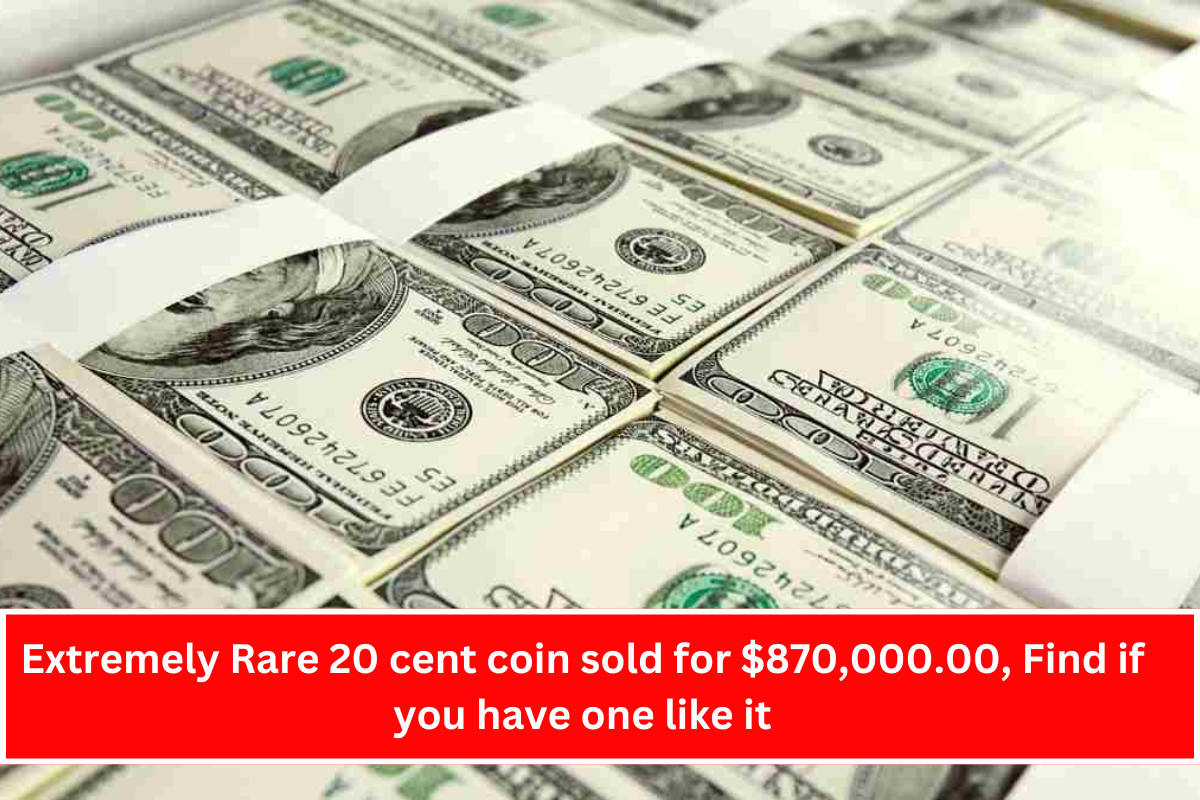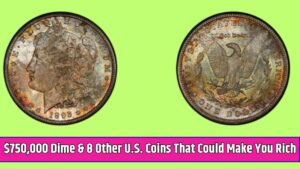The 1876-CC 20-cent coin stands as one of the most coveted rarities in U.S. numismatics. Regarded by experts, including Heritage Auctions, as a “numismatic prize of the first order,” it is a piece that every serious collector dreams of owning.
Its historical significance and extreme scarcity justify the extraordinary $870,000 price tag that one enthusiast paid to include this treasure in their collection.
Often compared to other legendary coins such as the 1804 Silver Dollar, the 1894-S Barber Dime, and the 1838-O Capped Bust Half Dollar, the 1876-CC 20-cent piece is truly a gem of exceptional rarity and intrigue.
Origins of the 20-Cent Coin
The $20 coin was officially authorized under the Act of March 3, 1875, championed by U.S. Mint Director Henry Linderman. The coin was introduced as a solution to a practical issue: the widespread shortage of five-cent coins.
This shortage led to overcharging and inconveniences for both merchants and customers. By creating the 20-cent piece, the Mint sought to provide a viable option to address these transactional challenges.
However, the coin’s unusual denomination led to confusion and its eventual downfall. If the Mint had simultaneously discontinued the quarter when the 20-cent coin was introduced, the situation might have played out differently.
Instead, the coexistence of both denominations caused considerable issues, dooming the 20-cent piece from the start.
The Unpopularity of the 20-Cent Coin
The 20-cent coin was a peculiar addition to U.S. currency, and its similarity in size and design to the quarter led to widespread confusion among users.
While the coin aimed to solve specific problems in commerce, its lack of popularity among the public and merchants sealed its fate. The denomination was discontinued shortly after its debut, further elevating its status as a rarity.
The Design of the 1876-CC 20-Cent Coin

The obverse of the 1876-CC 20-cent coin features a striking rendition of Lady Liberty seated on a rock, facing left. In her right hand, she holds a liberty cap atop a pole, while her left hand grasps a shield inscribed with the word “Liberty.
” Surrounding her are 13 stars, symbolizing the original American colonies, and below her is the date “1876.”
The reverse side depicts a bald eagle clutching olive branches and arrows, signifying peace and readiness for defense. The intricate craftsmanship of the design further enhances its appeal to collectors and numismatists alike.
Legacy of the 1876-CC 20-Cent Coin
Produced exclusively at the Carson City Mint, the 1876-CC 20-cent coin represents one of the lowest-mintage coins in U.S. history. With only a handful of surviving specimens, this coin has become a true legend among collectors.
Its historical significance, combined with its rarity and aesthetic appeal, ensures its place as a treasured piece of American numismatic heritage.
Also See: 10 State Quarters That Turned Pocket Change Into Thousands Of Dollar
FAQs
1. Why was the 20-cent coin introduced?
The 20-cent coin was introduced to address a shortage of five-cent coins and to facilitate smoother transactions, particularly in the western United States.
2. Why did the 20-cent coin fail?
Its failure stemmed from its similarity to the quarter in size and appearance, which caused confusion among users. The denomination was unpopular and discontinued after just a few years.
3. How rare is the 1876-CC 20-cent coin?
The 1876-CC is extremely rare, with only a small number of surviving examples. It is considered one of the rarest U.S. coins ever minted.
4. What is the design on the 20-cent coin?
The obverse features Lady Liberty seated on a rock, surrounded by 13 stars, while the reverse depicts a bald eagle clutching olive branches and arrows.
5. Why is the 1876-CC 20-cent coin so valuable?
Its value comes from its historical significance, scarcity, and the enduring appeal of its design, making it a prize among collectors.















